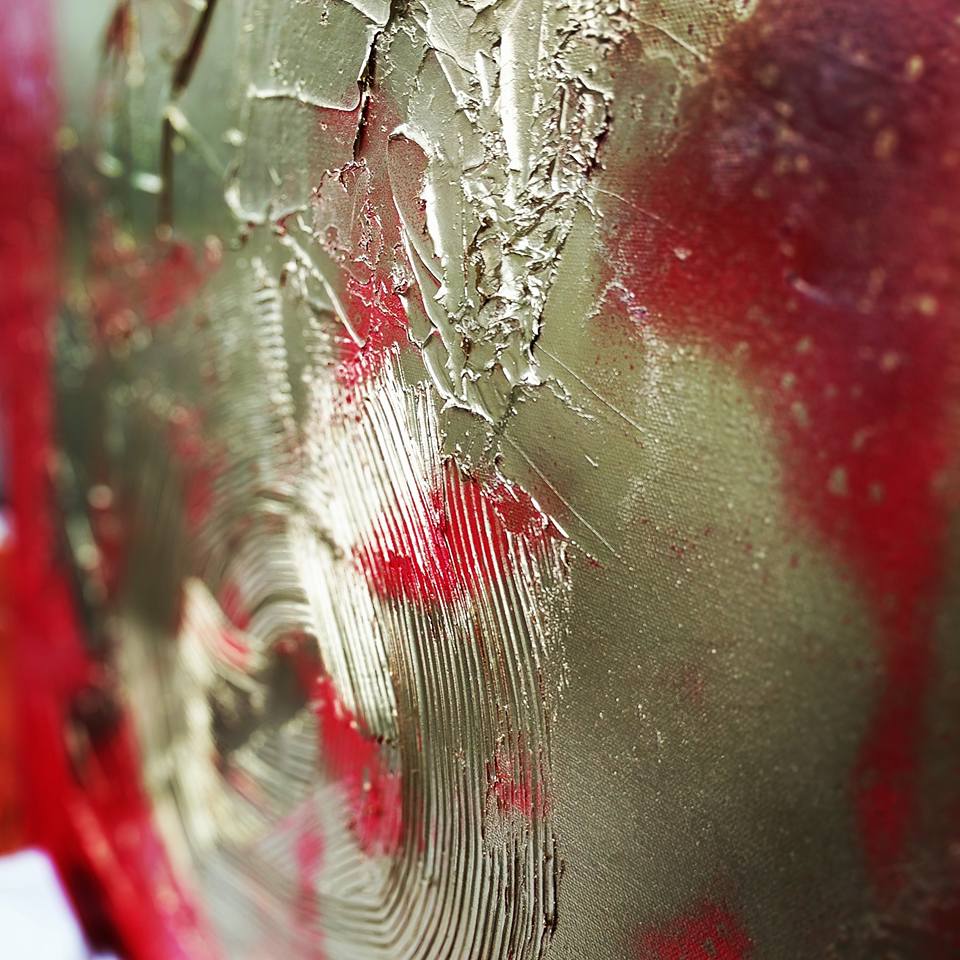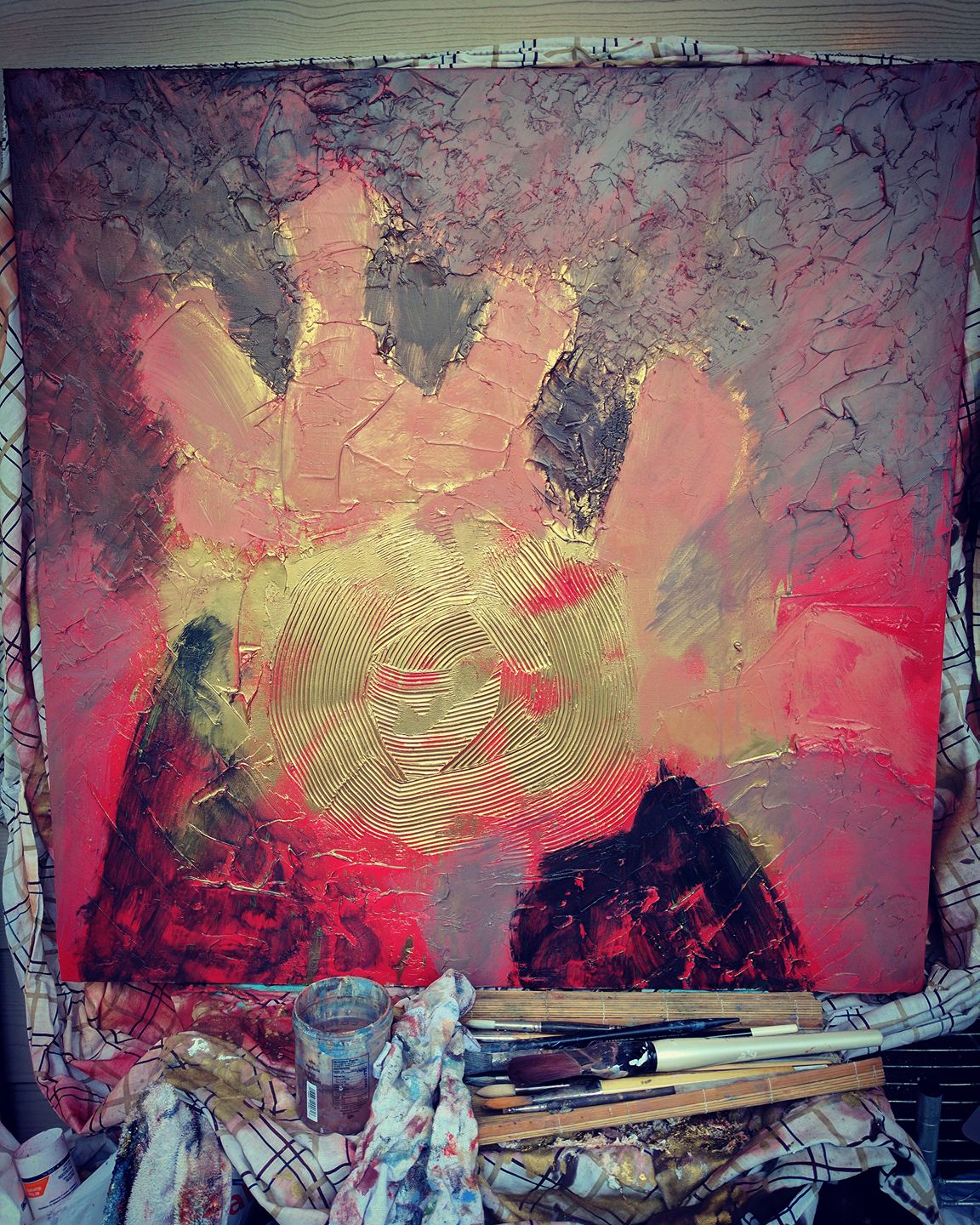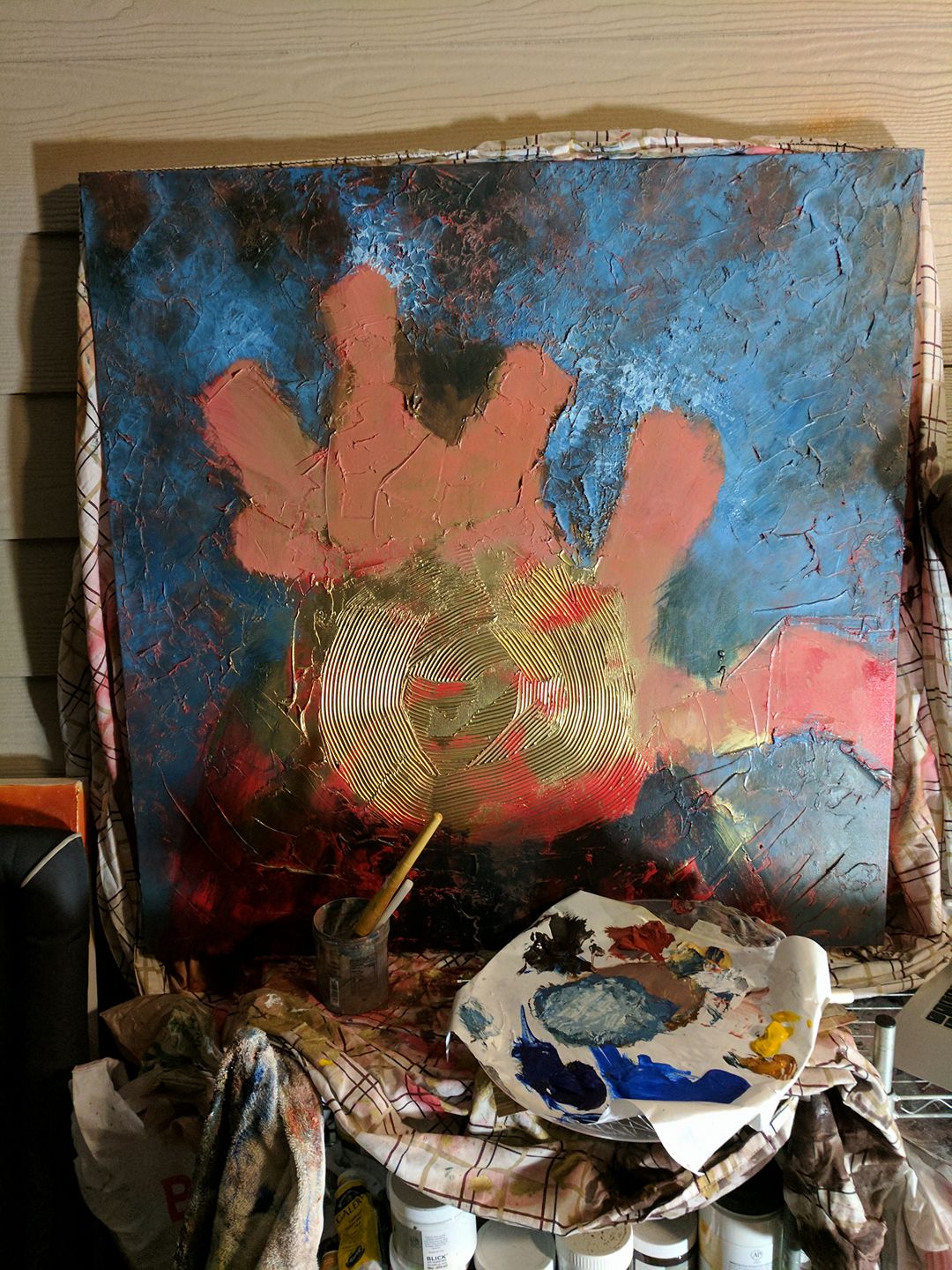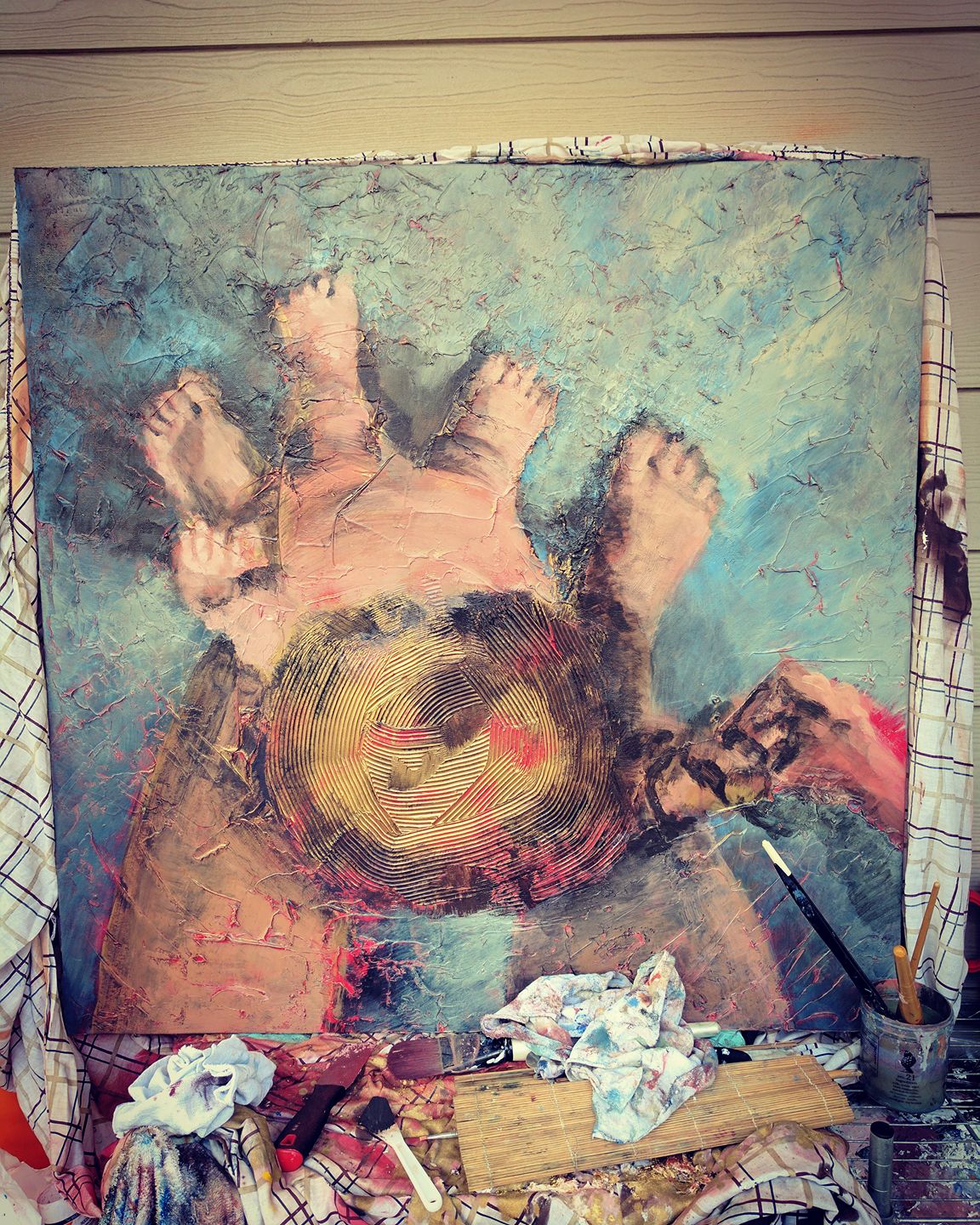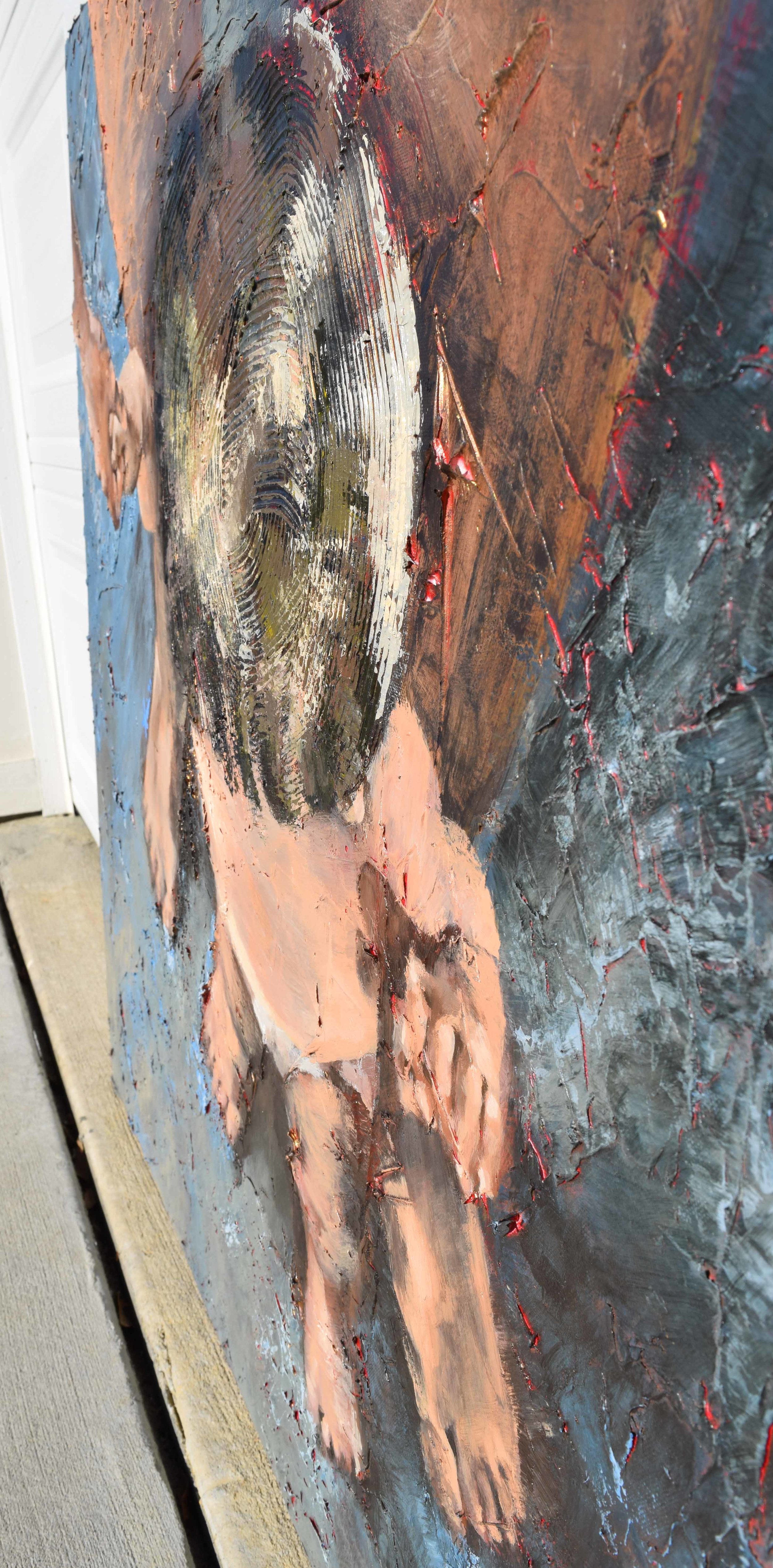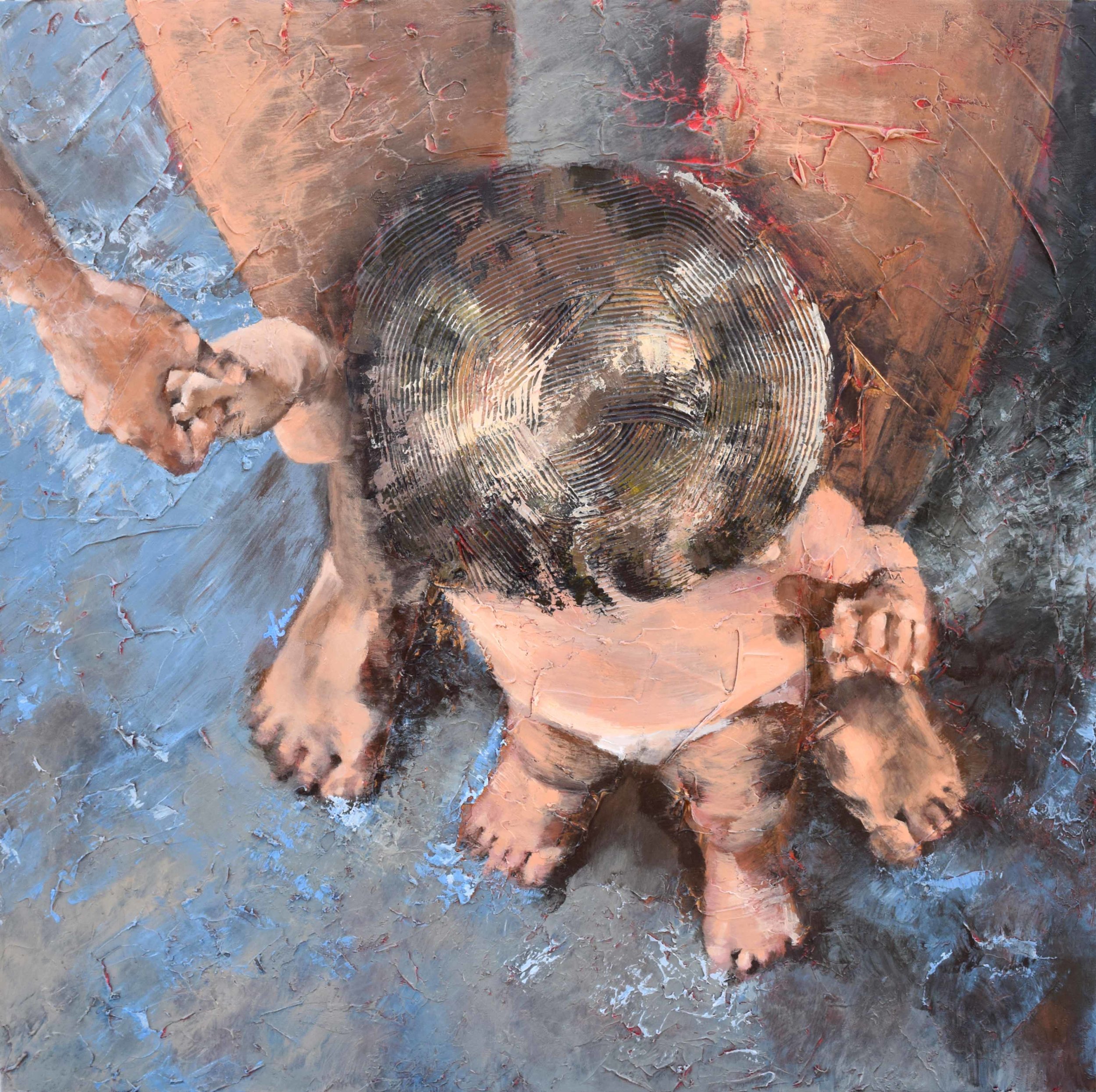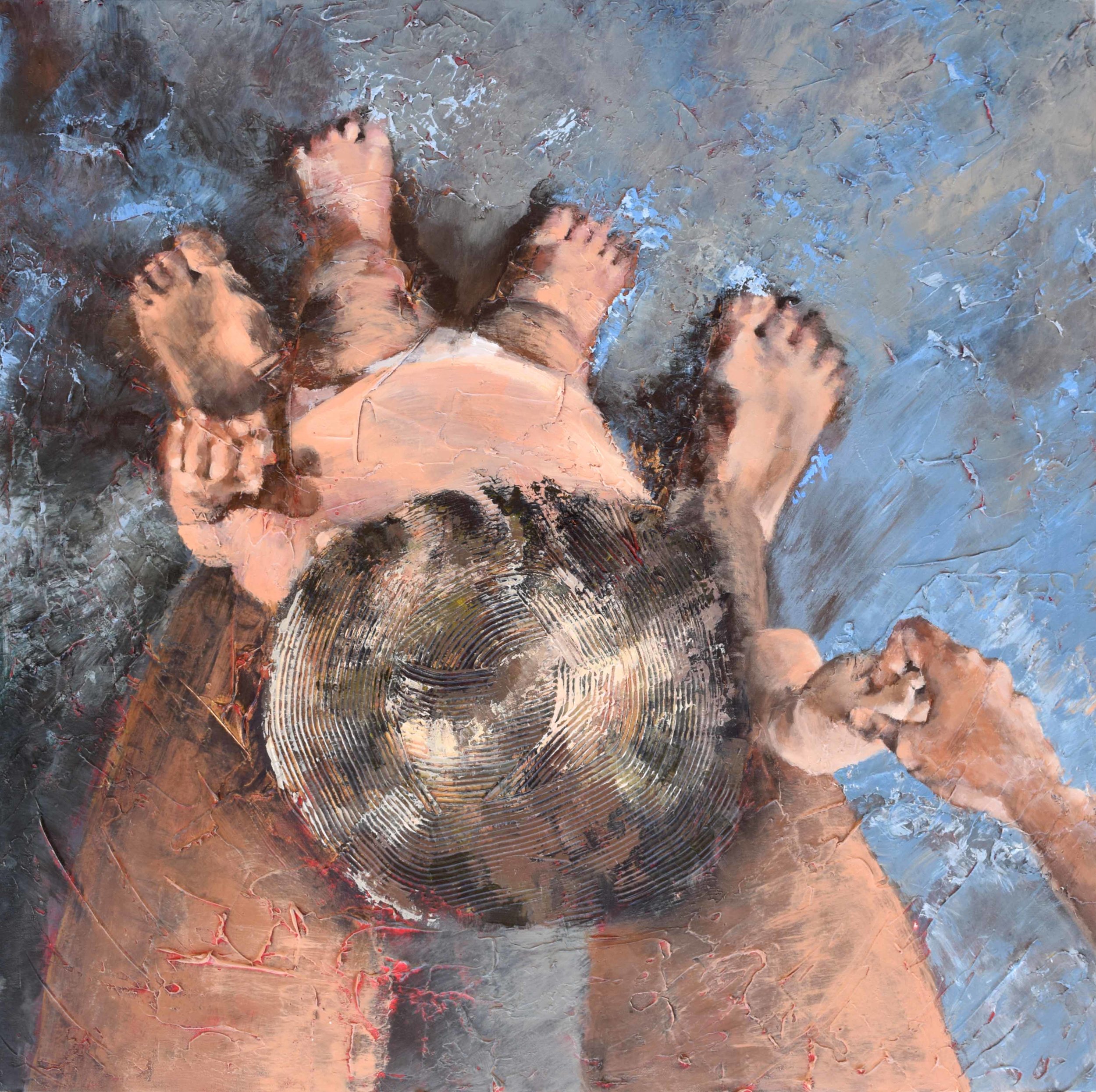I first did about 4 or 5 planning sketches to get a feel for different compositions. I landed on this one as a color spring board.
Session #1 I'm mainly concerned with filling in the white space and planning the composition at this point. I find white space tends to glaringly stare at me so I like to get a feel for where things are going rather early on in the process.
Session #2 Structure added to the left figure and the right figures have been worked on with graphite powder and watercolor.
Session #3 Worked reductively with an eraser on the right figures to add tones and highlights as well as some basic structure. I also took this session to add a few more layers of depth to the water.
Session #4 Detail work added to the central figures in graphite, reductive eraser, and watercolor. Both figures work together with lines curving toward each other, figures leaning inward, and the silhouette of the two create a circular motion. I also added flowers in the foreground at this stage.
Session #5 and #6 After working with loose graphite, I had to spend some time cleaning up the overall surface of the canvas which made a surprising difference in seeing all of the watercolor layers that had been hidden underneath. In these sessions, more warmth was added to the background to counterbalance the bright orange figure on the left. Highlights and details were added to the female figure on the right and both heads were given stronger structure.
Session #7 I began texturing the foreground and gave the figures weight with a more defined connection to the ground.
Seaside Memories 36"x24", mixed media on canvas.
This is the first time I used Yes! Canvas in my search for trying to find a surface for working in mixed media. I am so happy with how it received both wet and dry materials! I was considering going back to working in mixed media for some time so this first attempt at bringing it to canvas brings exciting prospects. Looking forward to continuing my explorations!








